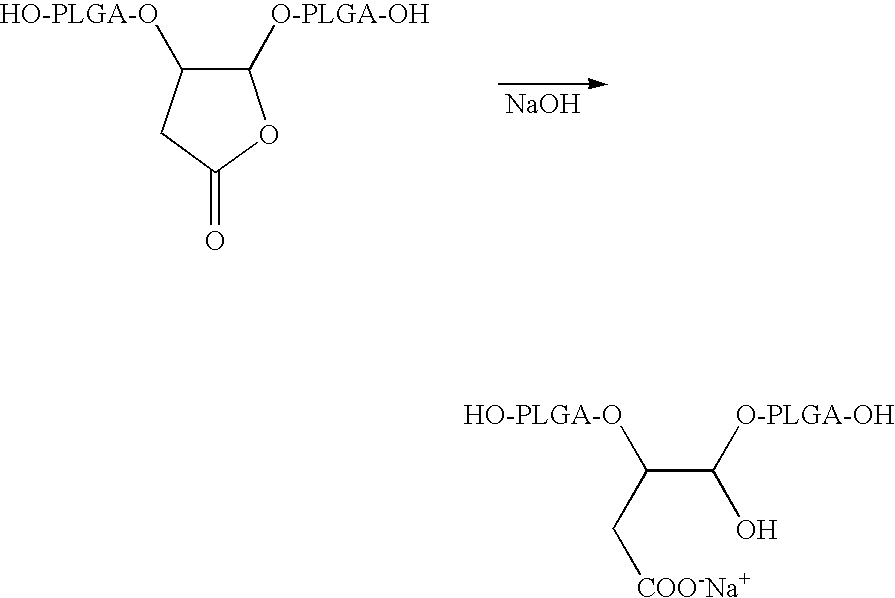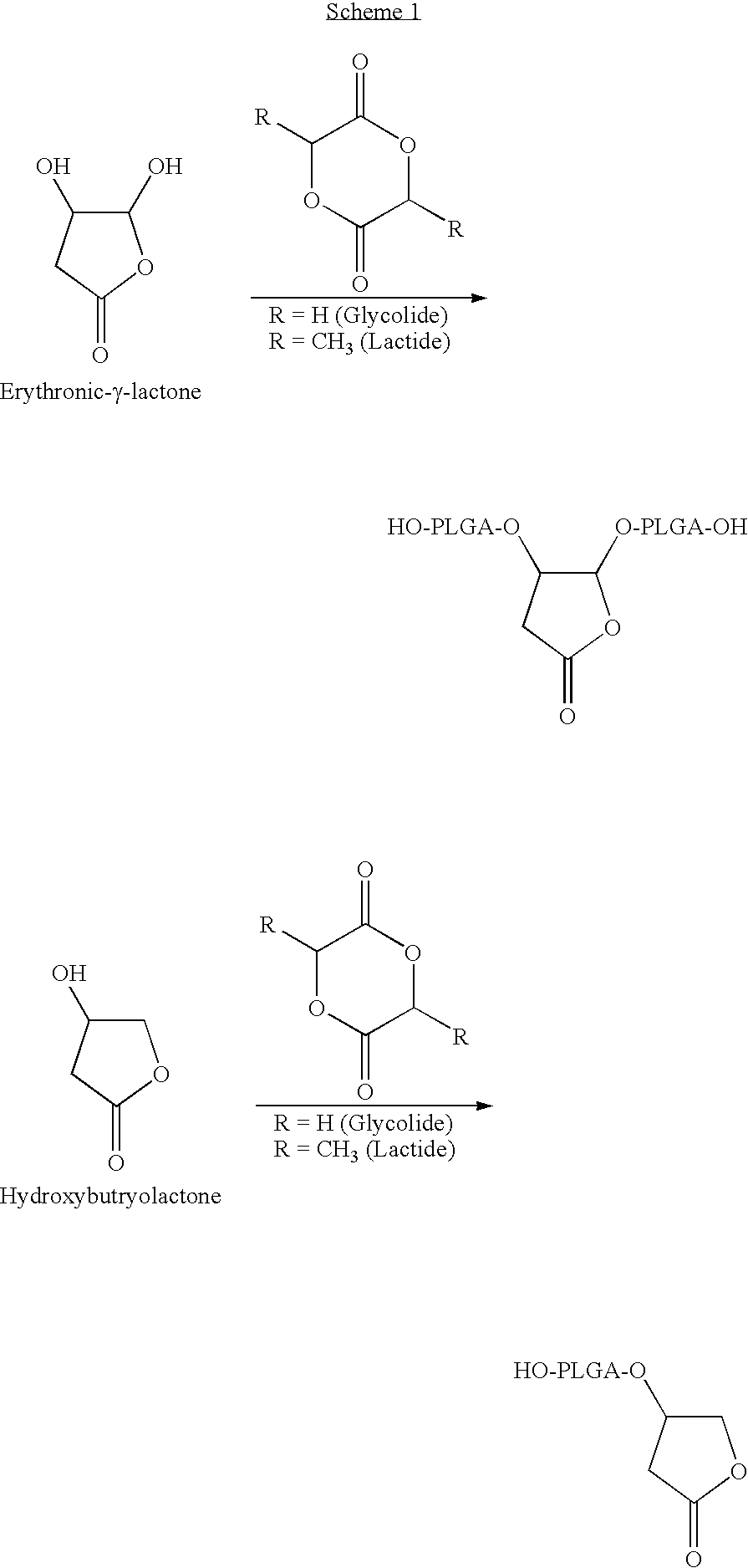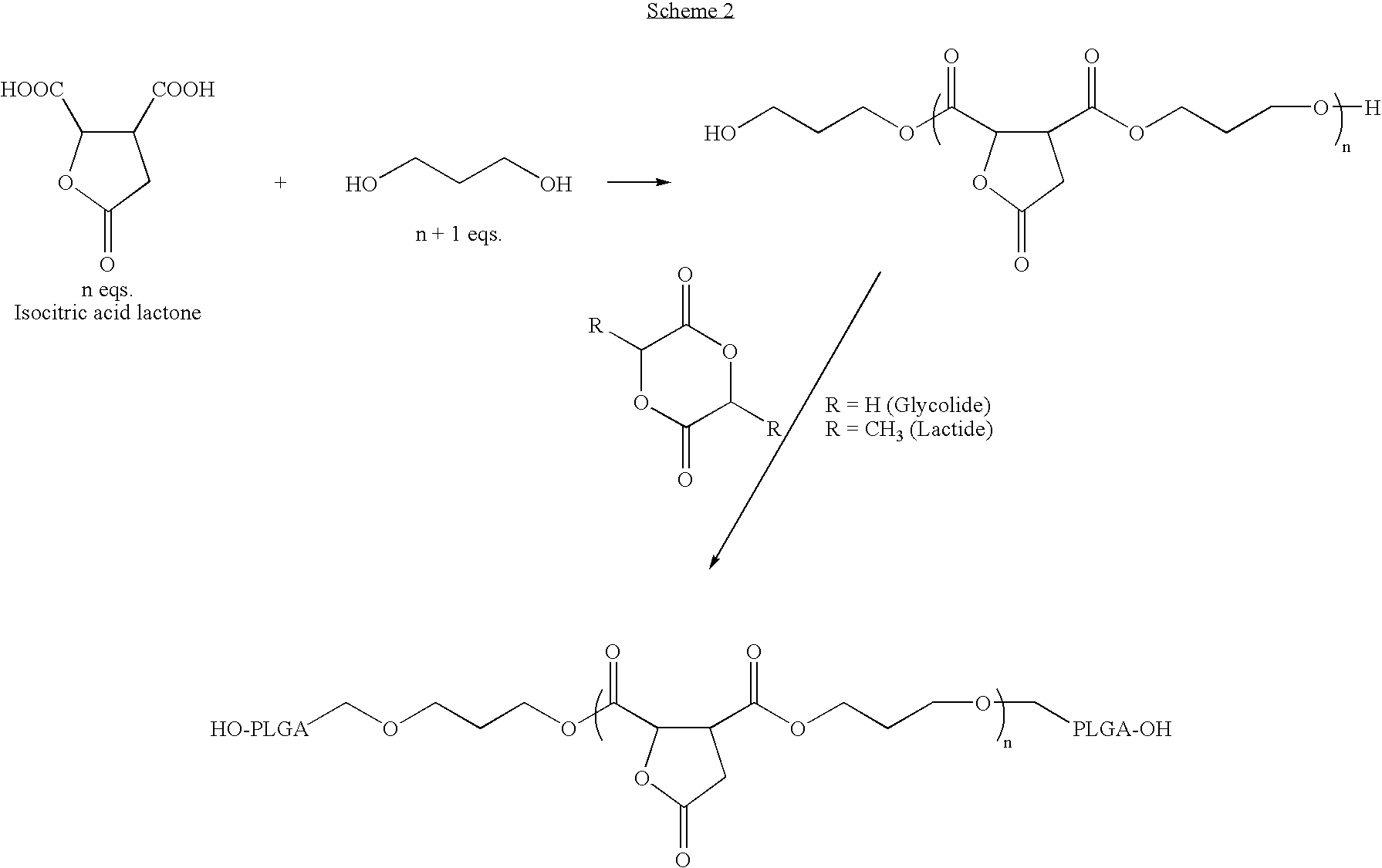Lactone bearing absorbable polymers
a technology of lactone and absorbable polymer, which is applied in the direction of microcapsules, synthetic resin layered products, aerosol delivery, etc., can solve the problems of inability to absorb lactone, poor encapsulation efficiency, and inability to release therapeutic agents from such a phase separated
- Summary
- Abstract
- Description
- Claims
- Application Information
AI Technical Summary
Benefits of technology
Problems solved by technology
Method used
Image
Examples
example 1
Ring Opening Polymerization: Synthesis of 65 / 35 p(dl-lactide-co-glycolide) Initiated by Erythrynolactone:
[0237]DL-Lactide (43.8 g, 0.3041M), glycolide (17.6 g, 1517M), erythrynolactone (1 g, 0.0084M) and 0.2 ml stannous octoate catalyst were added to the reaction vessel provided with a mechanical stirrer. The reaction vessel was evacuated and purged with dry argon at least three times and then left at a positive pressure of argon. The reaction vessel was immersed in an oil bath kept at about 160° C. The reaction was allowed to proceed for about 6 hours. After completion of the reaction, the temperature was lowered to about 100° C. and the vessel was evacuated to remove any residual monomer. The reaction vessel was cooled to room temperature, quenched in liquid N2 and the polymer was collected. The polymer was further purified by preparing a 10% solution and precipitating in cold water. The precipitate was collected and dried under vacuum. Polymer molecular weight determined by GPC a...
example 2
Ring Opening Polymerization: Synthesis of p(dl-Lactide) Initiated by Isopropylidene Ribonolactone:
[0238]DL-Lactide (60 g, 0.4166M) and isopropylidene ribonolactone (2.35 g, 0.0125M) were polymerized according to the procedure described in Example 1. The molecular weights of the polymer obtained determined by GPC analysis is Mn=5050, Mw=7980.
example 3
Step Growth Polymerization and Subsequent Ring Opening Polymerization: Preparation of polyethylene glycol-co-poly(lactide-co-glycolide) copolymers Containing Butrylolactone
[0239]Isocitric acid (Aldrich Chemicals, St. Louis, Mo.) (2.5 g, 0.0143M) and polyethylene glycol-400 were mixed in a three necked round bottom flask, along with 50 ml of toluene. The toluene was refluxed at about 130° C. to azeotropically remove the water formed during the reaction by using a Dean-Stark apparatus. After about 48 h, the toluene was completely removed by distillation, and DL-lactide (30 g, 0.2082M), and glycolide (16.1 g, 0.1388M) were added along with 0.2 ml stannous octoate catalyst in toluene. The temperature of the reaction vessel was raised to about 160° C. and the polymerization was carried out for about 6 h. At the end of the polymerization, the reaction vessel was evacuated to remove any residual monomer.
PUM
| Property | Measurement | Unit |
|---|---|---|
| time | aaaaa | aaaaa |
| time | aaaaa | aaaaa |
| temperature | aaaaa | aaaaa |
Abstract
Description
Claims
Application Information
 Login to View More
Login to View More - R&D
- Intellectual Property
- Life Sciences
- Materials
- Tech Scout
- Unparalleled Data Quality
- Higher Quality Content
- 60% Fewer Hallucinations
Browse by: Latest US Patents, China's latest patents, Technical Efficacy Thesaurus, Application Domain, Technology Topic, Popular Technical Reports.
© 2025 PatSnap. All rights reserved.Legal|Privacy policy|Modern Slavery Act Transparency Statement|Sitemap|About US| Contact US: help@patsnap.com



